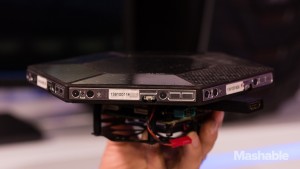Use the research and analysis you have done in this module on the history, development, and functionality of UAS, and the human factors issues related to their operations to provide a response to the following scenario.
You have been hired as a consultant due to your expertise in UAS human factors issues by a small UAS startup company, specializing in precision agricultural crop dusting operations. This company has just been awarded a contract to conduct their operations on a few large farms in a rural part of a very large state. Unfortunately, when the local newspapers published some details of this operation a number of citizens became very concerned because they did not want “drones” flying in their community and spying on them. There is so much concern, that a member of the county commission has proposed a local ordinance banning all “drone” operations in their jurisdiction for 3 years. There will be a vote on the ordinance, and your company has asked you to use your expertise to speak at the open forum to convince the local community to let their operations go forward by describing the benefits to agriculture, and assuring people that “drones” will not be used to spy on them. Use the following questions to get started and generate some ideas about what to say to the community in order to reassure them about your company’s intentions.
What effect, if any, has the ubiquitous use of the term “drone” to refer to all categories of UAS in popular culture and the media had on the public perception and future utility of UAS?
Do the terms used to describe and identify these systems matter?
Do you think that future commercial applications of UAS have been hindered by inaccurate reporting and the perception that they are used primarily for spying on and killing enemy combatants in warfare?
The term drone has all but solidified an image in the public mind that all of these systems are meant to spy or conduct nefarious operations meant to harm or even kill. The movies have assisted in this perception by ingraining images of robots firing large caliber weapons or wielding large knives on unsuspecting people. These images, some gruesome some not, have fueled the fire of the public perception as it relates to most unmanned systems. The media has sensationalized the issue such that drones are dangerous and meant to spy and harm (Landforce, 2016). The media has focused mostly on who has been arrested for flying a drone here or there, drones are killing people, drones are spying on people, instead of the good that these systems do in terms of 3D mapping, search and rescue, precision agriculture, or delivering much needed medicines to people in third world countries (Mulligan, 2015). If the media and people in general were to focus on the good this technology can do then it is fair to say the public perception may change. If we are going to discuss this technology accurately we most also take into account the term drone as it relates to autonomy to include semi-autonomous, fully autonomous and systems that are remotely piloted. A semi-autonomous system is one that requires some human interaction while a fully autonomous system requires little to no human interaction while a remotely piloted vehicle (RPV) is on that may be unmanned but still flown by a pilot through the use of a ground control station. The term drone is not used in the military to describe the MQ-1B Predator or MQ-9 Reaper because these systems are not drones (completely autonomous) rather they are RPV’s. This change in public perception must also be addressed by the industry which can help turn the negative connotation into a positive technology that is meant to do good. This can be achieved through an effort to educate the public on the technology and the many positive uses of such systems (Mulligan, 2015). It is important to educate the public through positive media reports, articles, and others. Perceptions do not change overnight but through positive examples we can begin to sway the population to the good side of the technology. This will in turn help the long term growth, help us to utilize this technology to its full potential and for the greater good. We will spark the imagination of school children around the world who want to learn the inner workings of software, aerodynamics, engineering and other disciplines that will keep us moving forward. To foster in the next wave of innovators that will come up with the next uses for this amazing technology. It starts here, small steps, the corn field down the road, the soybeans in the next county, the farmer who can get the water information he needs in minutes as opposed to hours. Find the infestation of worms in the center of the field and kill it before it spreads. If you could use a technology that could save you time and give you the ability to do things you’ve never be able to do before isn’t that worth your time? It is the difference between putting food on the table and losing it to a parasite.
References
Landforce, C. (2016). Drones in the media: why you should care about Kanye West. Retrieved from https://3dr.com/drones-media-kanye-west/ (Links to an external site.)
Mulligan, C. (2015). Getting rid of negative drone perceptions. Retrieved from http://sdtimes.com/getting-rid-of-negative-drone-perceptions/ (Links to an external site.)

